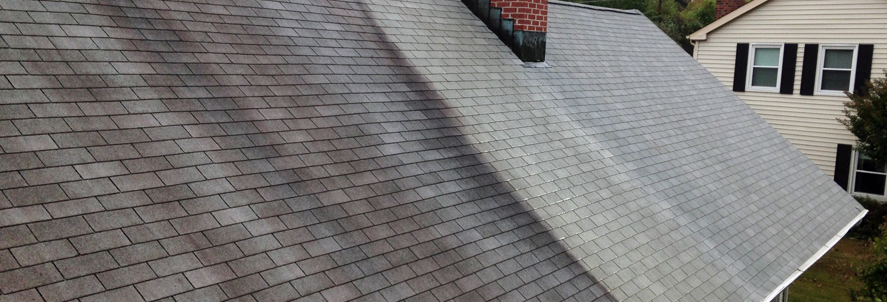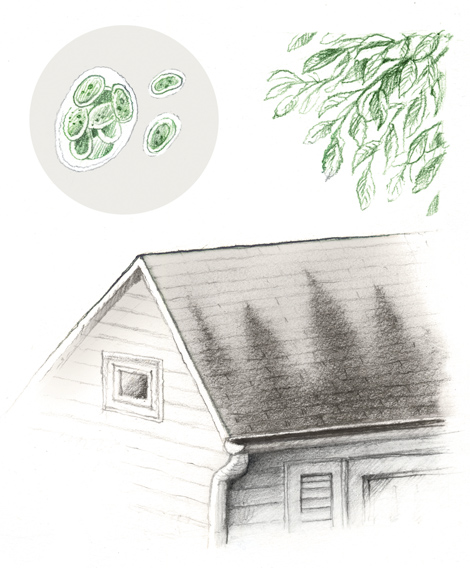
Power Washing | Soft Washing | HybridWash!

Roof algae: The prehistoric organism that streaks your shingles

Black streaks running down your roof aren't a sign that the asphalt shingles are dissolving or that you need a new roof. Rather, you have roof algae.
The organisms arrive on the rooftop as either spores or clumps of cells. If they land on the north side of the roof, where the sun is less harsh and moisture more plentiful, the algae will have a good environment to multiply, spreading in a delta down the slope of the roof.
Asphalt shingles contain limestone, which makes them heavy, durable and reflective. Roof algae over time will slowly consume the limestone, ultimately weakening the shingles.
Algae cells produce a dark pigment that acts as a sunscreen, protecting the cells from the sun. As this pigment accumulates on shingles, the roof becomes less reflective and absorbs more sunlight, which is transferred into the house as heat, raising cooling costs.
Roof algae are the first wave in a succession of organisms that can colonize and ultimately undermine a roof. The algae can eventually team up with a fungus to form lichen. Moss follows, building a small layer of soil that might catch seeds from bird droppings. By the time grass sprouts between the shingles, it's past time for a new roof. The process can take years.
An ancient organism
The growths on the roof are cyanobacteria, or blue-green algae, a phylum of organisms that has dwelt on Earth for about 3 billion years. As primordial photosynthesizers, they were the originators of oxygen in the atmosphere. Gloeocapsa magma is the species that blackens roofs.
Cleaning an affected roof
Roofing experts warn against using pressure washers on asphalt shingles because that can damage the shingles and do a poor job of removing algae.
Roof algae, Gloeocapsa magma, illustration by Patterson Clark Roof algae most often grows beneath trees and on a roof's north side.
Instead, professionals use a low-pressure application of bleach and water, which kills the algae and restores the shingles.
However, bleach runoff can be a potent pollutant, so care must be taken to protect plants, soils and aquatic ecosystems.
Source: http://www.washingtonpost.com/wp-srv/special/metro/urban-jungle/pages/130618.html
Yes, we can bring our own water!



